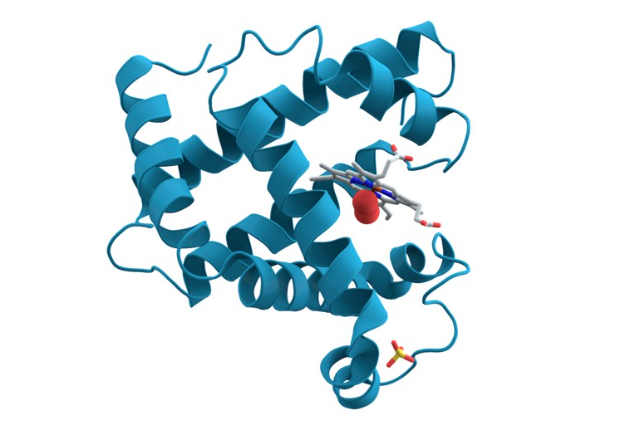In the invisible realm of molecular biology, proteins serve as the bustling workforce behind every biological process. From catalyzing chemical reactions to forming the structural scaffolding of cells, proteins are the engines of life. But understanding how they function goes far beyond identifying their amino acid sequences. Their three-dimensional structures and dynamic motions are what truly determine their behavior. This is where BioEmu, a revolutionary tool, comes into play—bridging the gap between static structural data and dynamic molecular reality.
The Importance of Protein Structure and Dynamics
Proteins are composed of linear chains of amino acids, which fold into complex 3D shapes. These structures are not static; they breathe, twist, and morph—subtle motions that often dictate whether a protein functions correctly or leads to disease.
Traditional structural biology tools like X-ray crystallography, NMR spectroscopy, and cryo-electron microscopy have enabled researchers to capture protein structures with high resolution. However, these are mostly static snapshots—akin to photographs—frozen in time. Yet proteins in living organisms are more like actors in a film, constantly changing poses and conformations to interact with other molecules, bind substrates, and carry out essential tasks.
This is where the need for dynamic modeling arises. And this is where BioEmu enters the scene.
What Is BioEmu?
BioEmu is a next-generation computational biology platform designed to simulate, animate, and analyze protein dynamics in a biologically realistic and visually intuitive manner. The name “BioEmu” is short for Biological Emulator, emphasizing its goal: to emulate biological molecular behavior in motion, rather than just visualizing static forms.
By integrating data from molecular dynamics (MD) simulations, machine learning algorithms, and 3D visualization tools, BioEmu enables scientists, educators, and even students to see how proteins move, interact, and evolve over time. It is the equivalent of turning molecular stills into a feature-length film.
How Does BioEmu Work?
At the core of BioEmu is a physics-based simulation engine that relies on known physical laws, particularly Newtonian mechanics, to model the behavior of atoms and molecules. It begins with a known 3D protein structure—usually obtained from databases like the Protein Data Bank (PDB)—and then simulates how this structure behaves over time under physiological conditions.
Key elements of BioEmu's approach include:
- Molecular Dynamics Simulations: These simulations model the motion of atoms within proteins over femtoseconds (1 fs = 10^-15 seconds) to microseconds. BioEmu accelerates and visualizes these motions in real-time or high-speed playback.
- AI-Enhanced Predictive Modeling: Using machine learning, BioEmu can forecast possible conformational changes in proteins, especially when limited experimental data is available.
- Interactive Visualization: BioEmu allows users to rotate, zoom, and interact with proteins on screen while animations play. It’s like Google Earth for molecular biology.
- Real-Time Structural Analysis: Alongside animations, BioEmu displays useful parameters like root-mean-square deviation (RMSD), hydrogen bonding networks, and energy fluctuations, giving users both qualitative and quantitative insights.
Applications of BioEmu
The practical implications of BioEmu span across medicine, biotechnology, education, and drug discovery:
1. Drug Discovery and Design
Understanding how proteins change shape helps in identifying binding pockets—sites where drugs can latch onto and exert their effects. BioEmu allows researchers to simulate how drugs interact with proteins dynamically, enabling smarter drug design.
2. Disease Mechanism Studies
Many diseases, such as Alzheimer’s, Parkinson’s, and various cancers, are caused by protein misfolding or malfunction. BioEmu helps in visualizing and understanding these misfolding pathways in detail, offering clues for therapeutic intervention.
3. Protein Engineering
BioEmu aids bioengineers in designing custom proteins with specific functions, such as industrial enzymes, biosensors, or synthetic antibodies. By seeing how proteins move, scientists can predict how engineered mutations will alter functionality.
4. Education and Communication
For students and educators, BioEmu offers a powerful platform to visualize the unseen. Complex concepts like allosteric regulation, enzyme catalysis, or receptor signaling become far easier to grasp when seen in motion.
Advantages Over Traditional Tools
While molecular dynamics simulators like GROMACS, AMBER, or NAMD have existed for years, they often require deep computational expertise and command-line usage. BioEmu democratizes access by offering:
- User-friendly GUI (Graphical User Interface)
- Cloud-based processing, eliminating the need for supercomputers.
- Intuitive animation controls and sharing features for collaborative work.
- Integrations with AI tools like AlphaFold2, allowing dynamic simulation of predicted protein structures.
Limitations and Future Directions
While BioEmu is groundbreaking, it is not without challenges. Computational power and simulation accuracy remain limiting factors. Simulating large protein complexes or membrane proteins still requires heavy resources.
In the future, integration with quantum mechanics (QM/MM hybrid simulations), enhanced AI prediction, and multi-scale modeling will further boost BioEmu’s capabilities. Collaborations with global databases and research labs are also expected to enrich its functionality and expand its user base.
Conclusion: A Paradigm Shift in Molecular Visualization
BioEmu is more than just a visualization tool—it represents a paradigm shift in how we interact with the molecular machinery of life. By transforming static structures into moving, interpretable animations, it opens a new window into understanding the intricacies of biology. Whether for research, education, or innovation, BioEmu is empowering the next generation of scientists to see life in motion, one protein at a time.

